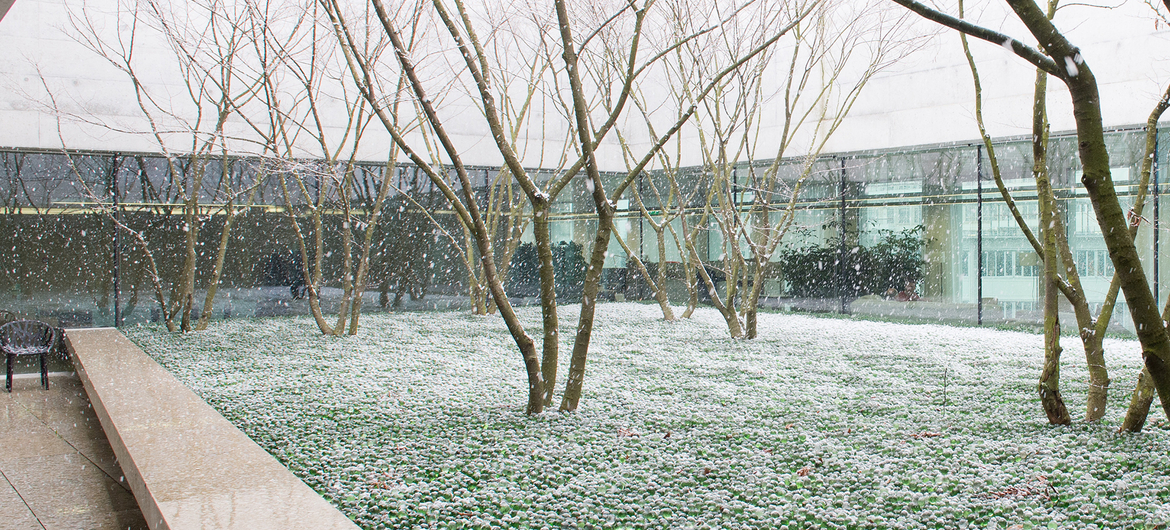Year: 2002-2008
Material/Technique: Recycled glass
This giant artwork features a concrete pool filled with 50 tons of recycled glass in the form of balls. These small glass spheres were spread out over the floor of the roof garden. They feature in three different colors and degrees of transparency (clear, greenish and bluish). Together they produce a green mass that glows dully, shines brightly or even sparkles according to the amount of light and nature of the incident sunlight. It looks as though the trees are growing out of this artificial substrate. The garden is enclosed by thick glass walls and can be walked round on all sides. Two doors provide access to it.
Through this artwork Spitzer aimed to create a bridge between the context of research conducted on the Novartis Campus and the art context. With the glass balls and carefully selected Japanese trees of the genus Zelkova, he celebrates nature – in the manner of a Japanese Zen garden – through artificiality. Here, the glass balls represent molecules - the building blocks of our world that are not visible to the naked eye but are at the heart of our research. With this shift in perspective from macro to micro, arranged in the field of tension between nature and artificiality, Serge Spitzer has created a work that illustrates life in all its complexity and makes it palpable.
Artist
Serge Spitzer (Bucharest 1951- NY 2012) is a Romanian-born American artist who is best known for his site-specific installations, sculpture, photographs and video. He studied at the Art Academy in Bucharest, Romania and then moved to New York.
Since the late 1970s, many of Serge Spitzer's most important works have been created as permanent public works or large-scale temporary installations in significant international exhibitions such as Documenta 8 and biennales in Venice, Istanbul, Lyon, and Kwangju.
In 1999 he participated in the Venice Biennale where his piece Re/Cycle (Don’t Hold Your Breath), an assemblage of thousands of balanced glasses, was one of the highlights of the exhibition. His work, which often explored issues of time and shared reality, is included in many collections, such as that of the Museum of Modern Art and the Brooklyn Museum in New York, the Kunstmuseum, Bern, the IVAM Instituto Valenciano d’Arte Moderno, Valencia; as well as the Menil Collection in Houston, among others.
